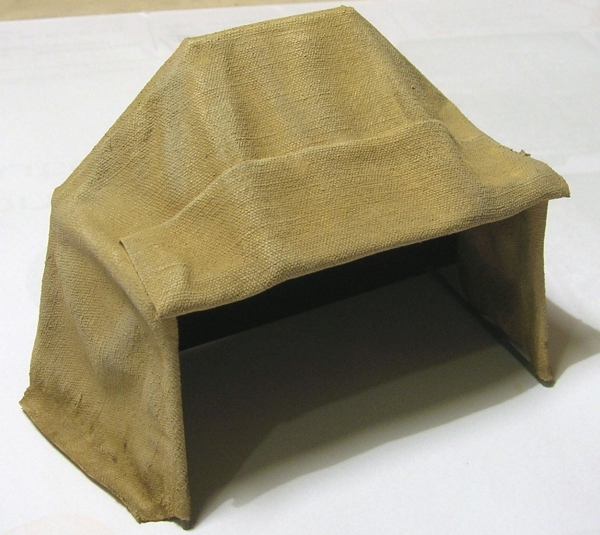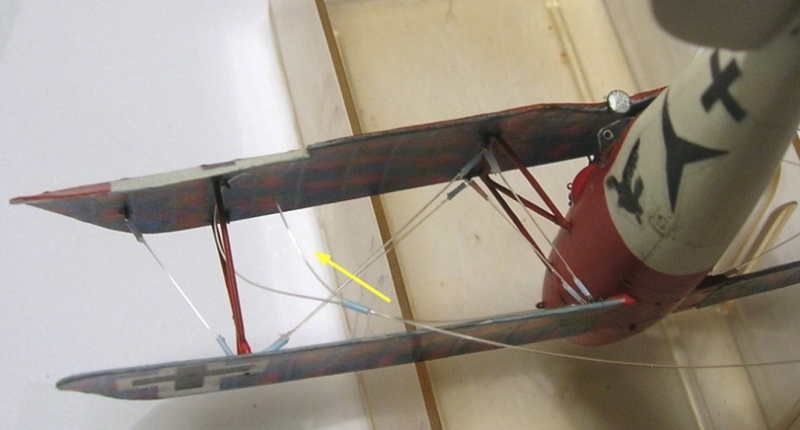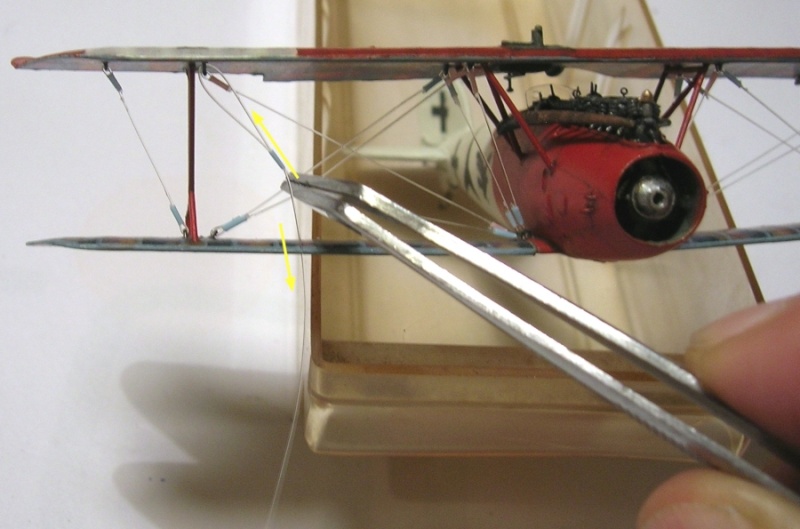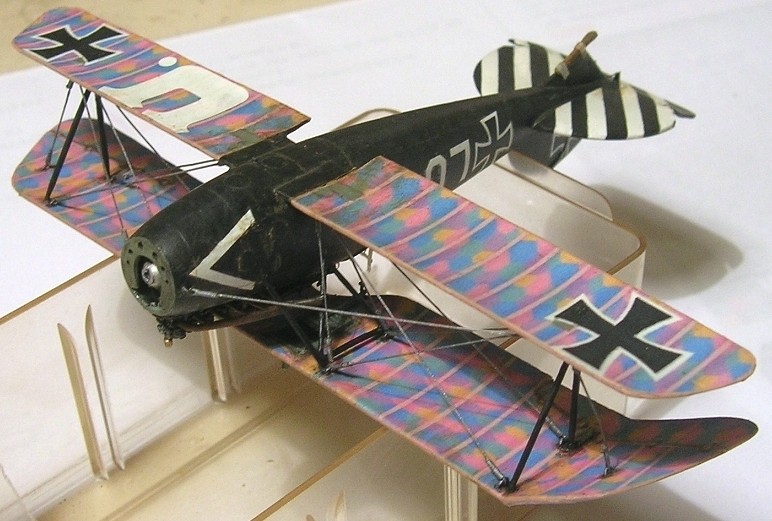Here's the front part of the maintenance tent for the Jasta 18 diorama. The tubular structure has been covered with fabric, which then has received a coat of white glue. This has made the fabric and folds in it look heavier, and has hardened the whole thing when cured. Once painted and drybrushed, the fabric's weaving looks rather heavy. I guess I'd better use silk for 1/72 scale...

Rigging the birds: a buckle is made at the first end by having a wire pass through a hook in the wing, and both ends go through a micro-tube. Then you just have to push the tube towards the hook in the wing, put a drop of glue inside the tube and cut one end of the wire away.

Tension (another wire is shown here). The first buckle is done. Then you put a tube onto the free part of the wire before having it go through the hook at the other end. Next step is to have the tip go though the tube a second time, which is usually tricky. When it's done, the wire is tensed by holding it with pliers and pushing the tube towards the hook with it, while pulling the free end of the wire.

Usually the tension is OK but you may have to increase it a bit with a hot scalpel blade.
Aileron cables are simple "go-through" wires which pass through holes in the lower wings. I hold them in tension with adhesive tape then drop CA in the holes.

Rigging completed and painted steel color on Udet's machine.
